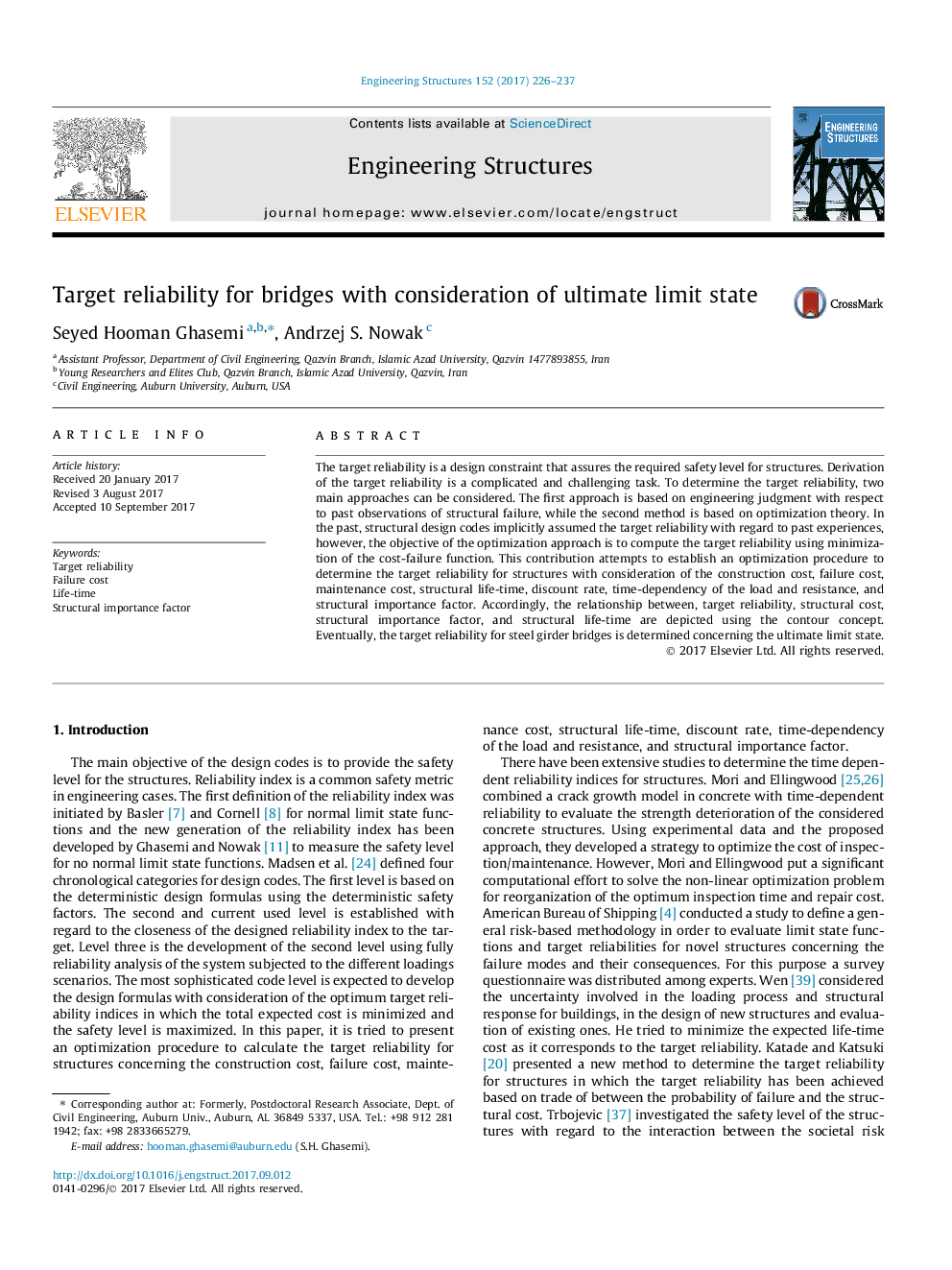| Article ID | Journal | Published Year | Pages | File Type |
|---|---|---|---|---|
| 4919692 | Engineering Structures | 2017 | 12 Pages |
Abstract
The target reliability is a design constraint that assures the required safety level for structures. Derivation of the target reliability is a complicated and challenging task. To determine the target reliability, two main approaches can be considered. The first approach is based on engineering judgment with respect to past observations of structural failure, while the second method is based on optimization theory. In the past, structural design codes implicitly assumed the target reliability with regard to past experiences, however, the objective of the optimization approach is to compute the target reliability using minimization of the cost-failure function. This contribution attempts to establish an optimization procedure to determine the target reliability for structures with consideration of the construction cost, failure cost, maintenance cost, structural life-time, discount rate, time-dependency of the load and resistance, and structural importance factor. Accordingly, the relationship between, target reliability, structural cost, structural importance factor, and structural life-time are depicted using the contour concept. Eventually, the target reliability for steel girder bridges is determined concerning the ultimate limit state.
Related Topics
Physical Sciences and Engineering
Earth and Planetary Sciences
Geotechnical Engineering and Engineering Geology
Authors
Seyed Hooman Ghasemi, Andrzej S. Nowak,
